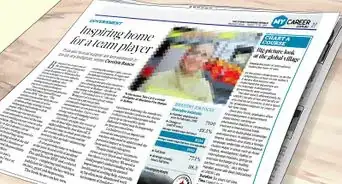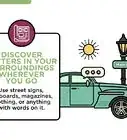This article was co-authored by wikiHow Staff. Our trained team of editors and researchers validate articles for accuracy and comprehensiveness. wikiHow's Content Management Team carefully monitors the work from our editorial staff to ensure that each article is backed by trusted research and meets our high quality standards.
There are 8 references cited in this article, which can be found at the bottom of the page.
wikiHow marks an article as reader-approved once it receives enough positive feedback. In this case, 94% of readers who voted found the article helpful, earning it our reader-approved status.
This article has been viewed 100,649 times.
Learn more...
Teaching letter sounds is an important step in preparing your child to read. Make or buy alphabet cards, download fun apps, and schedule your lessons to prepare. Introduce letter that occur in simple words first, as well as lower case letters, and short vowel sounds. Separate similar letters to avoid confusion. Make lessons fun by playing songs, using letter wheels, and plying games with your child’s favourite toys.
Steps
Setting Up the Lesson
-
1Make or buy illustrated alphabet cards. The best way to introduce letter sounds to a child is to associate them with a specific word. Purchase colorful, illustrated alphabet cards (from a book store or online) or buy index cards and draw your own. Letters should be bold and easily identifiable, while the pictures featured should be of things that your child is familiar with.[1]
- For instance, the “A” letter sounds card should feature both a capital “A” and lowercase “a”, and might have a picture of an apple on it.
-
2Download letter sound apps. Apps can accentuate your child’s lessons in a fun and interactive way, while keeping them entertained. Letter sounds apps are available for both iPhones and Androids. Try downloading:
- Letter Sounds A to Z, and multi-sensory Android app that allows your child to touch a letter and hear that letter sound>[2]
- Jolly Phonics Letter Sounds, an app for both iPhone and Android that teaches letter sounds via fun, interactive games
- AlphaTots, an app for Android and iPhones that uses interactive games to create letter associations[3]
Advertisement -
3Set up a schedule. Plan specific times to teach your child letter sounds when you know they will be more receptive to the lesson (e.g. after their naptime). Keep lessons fun and enjoyable. If your child gets frustrated or bored, pick the lesson up at a later time. [4]
Introducing Letter Sounds
-
1Teach certain letters first. Start by teaching your child the letter sounds that occur the most frequently in simple words first. Starting with the letter sounds “a”, “m”, “t”, “p”, “o”, “n”, “c”, “d”, for example, will let you use words like “mom, “dad”, “dot”, “nap”, and “mad”. Use your alphabet cards, which should have easy-to-identify pictures for words like “cat” and “pot”.[5]
- To use the alphabet card effectively, say the word indicated by the picture and enunciate the beginning sound of the word (e.g. “Eeeeeelefant”)
-
2Introduce lower case letter first. Teach kids to identify sounds for lower case letters first, as these occur more frequently in text. If necessary, block out the uppercase letters on your alphabet cards when first introducing letter sounds to you child. Uncover and revisit them when teaching them capital letters.[6]
-
3Introduce short-vowel sounds before longer vowels. Short vowel sounds are the most common vowel sounds, and correspond to the letters “a”, ”e”, “I”, “o”, “u”. Vowel sounds are continuant sounds and should be stretched out for 2 full seconds. Using your alphabet cards, introduce each sound to your child with regard to the picture (e.g. a picture of an orange for the letter “o”) and have them repeat the sound after you, multiple times until they can say it on their own.[7]
- Be grandiose about your pronunciation of short vowel sounds (e.g. pursed lips, hand gestures) to create a stronger association in your child’s mind.
-
4Separate similar letters. Make a point of teaching letter sounds for letters that look the same (e.g. “b” and “d”) at different times. Learning these letters back to back can be very confusing for kids. Leave at least several days in between so that your child can retain associations for one letter and build new ones for the other.[8]
- Once your child has a strong understanding of the letter sound “b”, for instance, you can introduce “d” as not being “b”.
Having Fun With Letter Sounds
-
1Play songs to help teach letter sounds. To get your child engaged with your lessons, download educational songs focusing on letter sounds. Songs for Teaching, for instance, is an educational website that sells MP3s of educational tracks, including a huge selection of phonics-based music. Song lyrics are listed so that you can sing along with your child and build strong associations with the word sounds being emphasized.[9]
-
2Use a letter wheel. Letter wheel are interactive paper toys that kids can spin to match up a letter with a picture of a word that matches that sound. For example, the letter “m” might match up with a picture of a mouse. Visit http://printables.atozteacherstuff.com/download/atozphonics/alphabetwheel.pdf for free letter wheel print-outs and instructions.
-
3Play games with favourite toys. Use your child’s favourite toys to create interactive games with strong associations. For instance, set up your child’s favourite stuffed animals and plastic toys on the ground and hold up an alphabet card (or draw a letter on a whiteboard or piece of paper). Have your child pick up the toy that corresponds with that letter – for instance, they should pick up their toy truck if you hold up the letter “t”.
-
4Read with your child. Reading with your child is an excellent way to bond with them. It is also a way to build your child’s cognitive functions, including pattern and sequence recognition. Read short, colourful books with your child to build the foundation for their reading skills.[10]
Community Q&A
-
QuestionHow do I create notes about this topic?
 Community AnswerYou could find words that are appropriate for the children's age group, which they are familiar with, and sound them out. Notes can be written like this: "Apple. A-puhl."
Community AnswerYou could find words that are appropriate for the children's age group, which they are familiar with, and sound them out. Notes can be written like this: "Apple. A-puhl." -
QuestionWould you like to recommend best sound apps for the very pre-learner?
 Adelaide BursonCommunity AnswerIt depends on whether or not the child likes using devices. Maybe ask him/her about it or give the child a device and observe how they go on about it. Notice whether or not they learn better virtually? Or not. Try to give them your phone every day for a week and let them do a game every day with the same topic, then after a week ask them questions their game would’ve answered and see if the get over five out of ten correct. If so, the child may like learning games online or in reality and you can ask them. Some recommendations are: .Teach you’re monster how to read, .abc mouse, .worlds worst pet, .lexia reading core five. And learning videos like Wally Cazame and Super Why.
Adelaide BursonCommunity AnswerIt depends on whether or not the child likes using devices. Maybe ask him/her about it or give the child a device and observe how they go on about it. Notice whether or not they learn better virtually? Or not. Try to give them your phone every day for a week and let them do a game every day with the same topic, then after a week ask them questions their game would’ve answered and see if the get over five out of ten correct. If so, the child may like learning games online or in reality and you can ask them. Some recommendations are: .Teach you’re monster how to read, .abc mouse, .worlds worst pet, .lexia reading core five. And learning videos like Wally Cazame and Super Why.
References
- ↑ https://www.readingrockets.org/strategies/alphabet_matching
- ↑ https://play.google.com/store/apps/details?id=com.allaboutlearningpress.Letter_Sounds_A_to_Z&hl=en
- ↑ https://www.commonsensemedia.org/app-reviews/alphatots
- ↑ https://www.readingrockets.org/teaching/reading101-course/modules/phonics/phonics-practice
- ↑ http://aacliteracy.psu.edu/index.php/page/show/id/6/
- ↑ http://aacliteracy.psu.edu/index.php/page/show/id/6/
- ↑ http://www.sightwords.com/phonemic-awareness/sound-pronunciations/
- ↑ http://aacliteracy.psu.edu/index.php/page/show/id/6/
- ↑ http://www.songsforteaching.com/phonics.htm
About This Article
To teach letter sounds, start by making or buying illustrated alphabet cards so the letter sounds are associated with specific words. For example, the “A” letter sounds card should feature a capital “A” and a lowercase “a,” and could have a picture of an apple on it. Additionally, download letter sound apps to make learning interactive and entertaining. When working with your child, plan specific times for lessons, keep learning fun, and take breaks if your child becomes frustrated. To learn how to best organize your letter sounds lessons, keep reading!
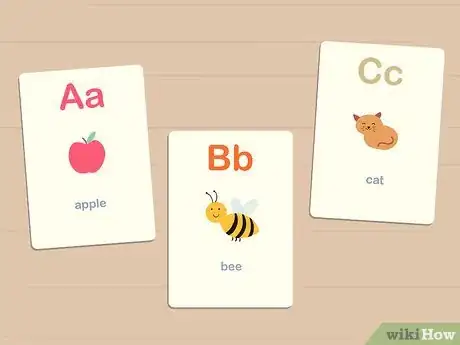
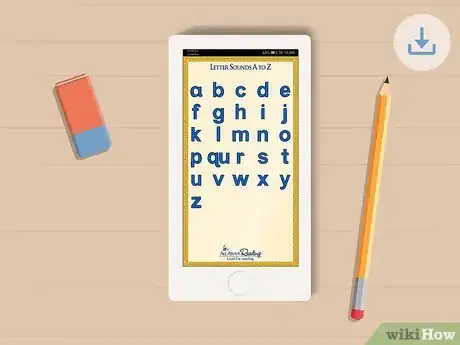
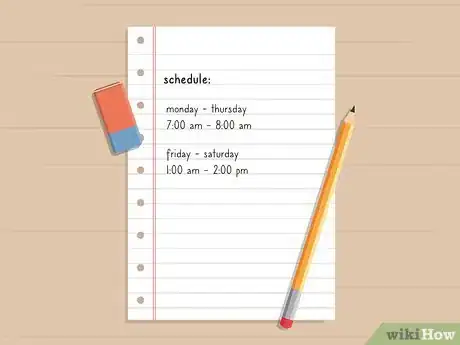
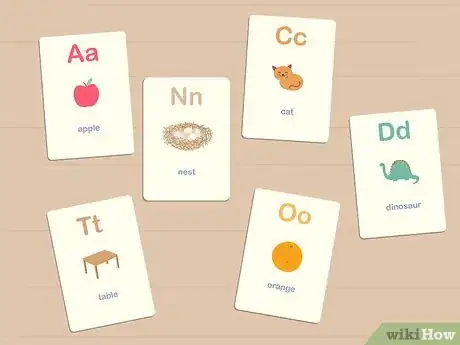

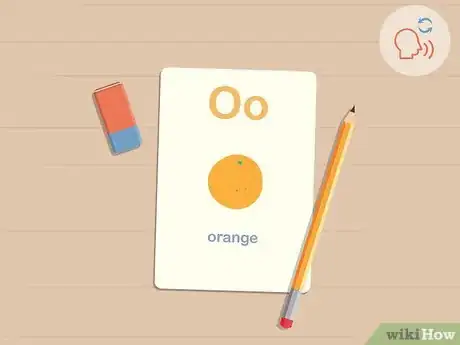
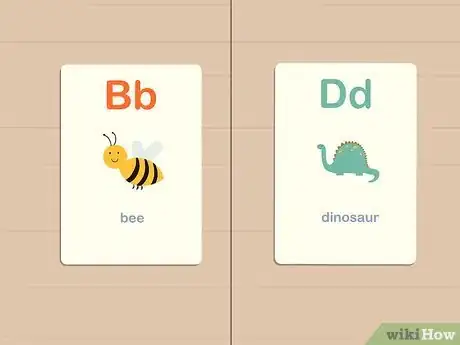
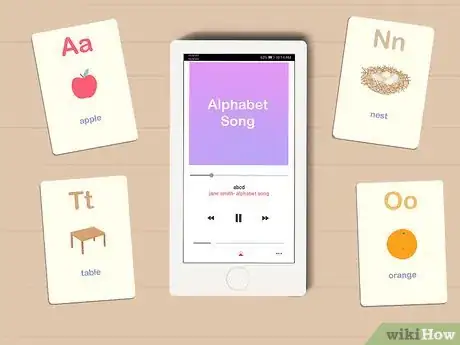
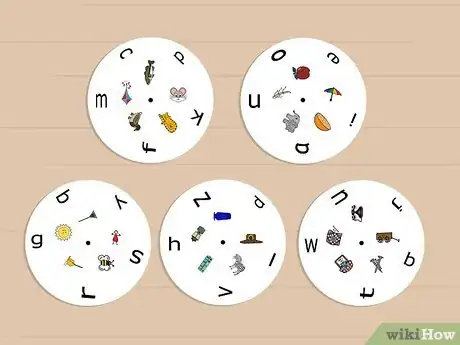
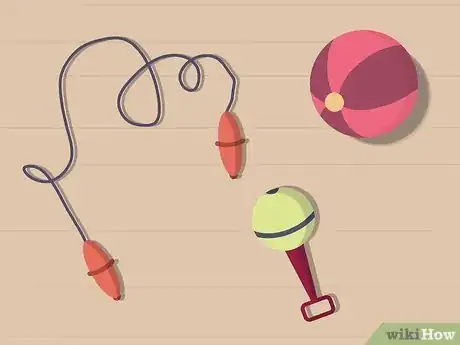
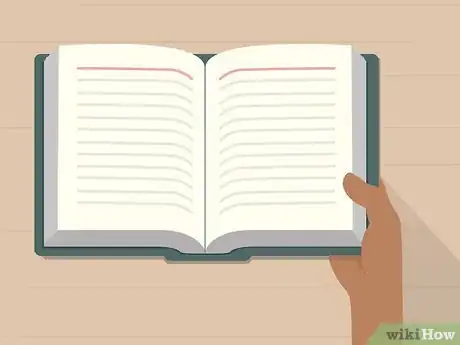

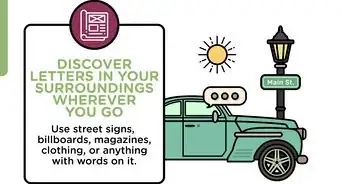




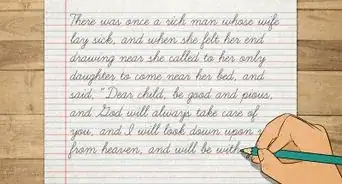

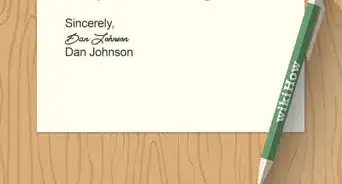
-Step-15.webp)


